
A 'Virtual Panel' Webinar by #DesignPopUp The Future of Design in the Education Sector
A Natural Learning Habitat
During the #DesignPopUp Virtual Panel webinar on Thursday 27th August, four guest speakers from the industry discussed the future of design in the education sector, focusing on the role of natural habitats, using materials inspired by nature and the importance of outdoor learning.
The webinar aimed to highlight how and why architects and designers should focus on creating more flexible, adaptable natural learning habitats which prioritise learner wellbeing — offering insight, solutions and ideas to suit the ever-changing needs and circumstances of those being educated.

The Panel
The speakers were: Karen Nugent, Head of Creative Workspace at Page\Park Architects (top left); Jill Stevenson, Dean for Equality, Diversity & Inclusion at the University of Stirling (top right); Stephen Long, Senior Associate Director (Education) at Scottish Future Trust (bottom left); and Diarmaid Lawlor, Associate Director at Scottish Future Trust (bottom right).
A positive connection to nature
The importance of outdoor learning has been an increasingly hot topic in early years education for some time. A growing body of research supports what we instinctively know — that learning outdoors in nature is beneficial in terms of wellbeing. It can improve recovery from stress, cognitive function and creativity, with the success of the Scandinavian model of outdoor learning often cited as aspirational.
But, as the panel noted, there is a marked disconnect between the focus afforded to outdoor learning in early years and that in most secondary or tertiary education settings, and subsequently into workplaces, echoing the progression through life from play in youth to work and responsibility in adulthood.
So how can that focus be manifested and realised from an architectural and design perspective, and how can it influence the governing processes of education? And perhaps even more importantly, how can architects and designers work to create more “natural” learning environments to benefit learners?
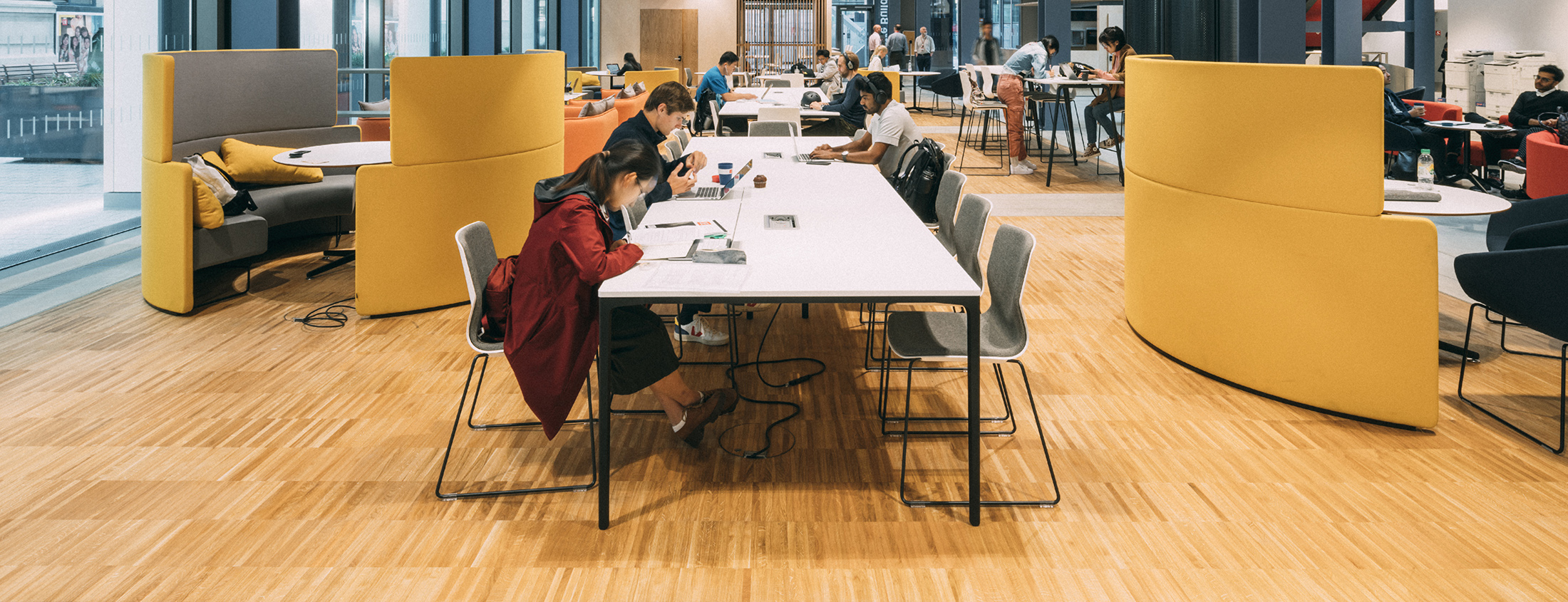
Project Image: London School of Economics
Design by Rogers Stirk Harbour + Partners
“Lockdown and confinement have magnified for all of us the importance of access to outdoor spaces in our daily lives.”
– Karen Nugent, Page\Park Architects
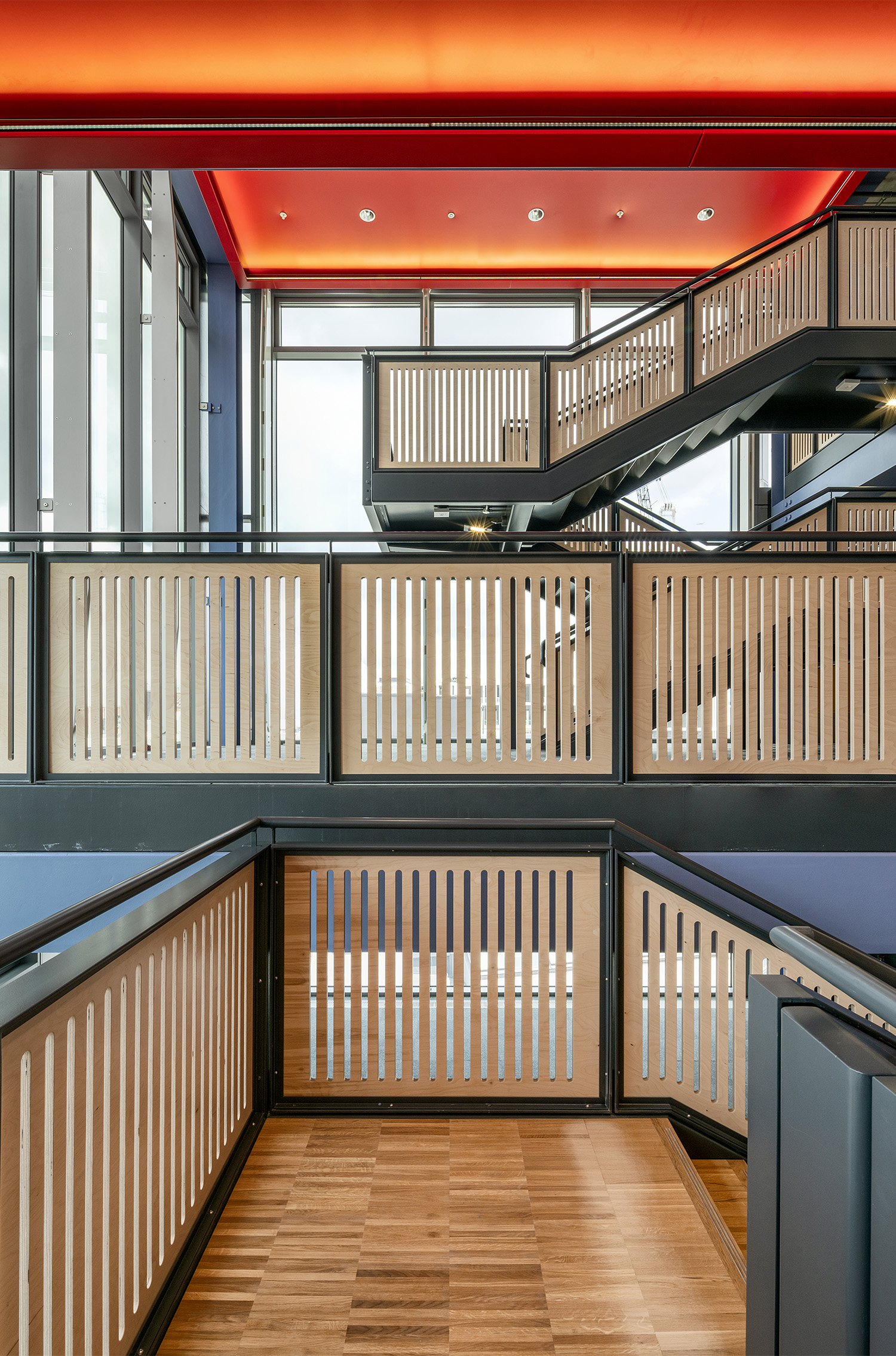
The fundamental human need for nature
Being forced into a much narrower existence in terms of the physical spaces we occupy, and the detrimental effect that has had on mental health for all age groups has given unprecedented insight into the importance of applying these learnings to educational environments.
While outdoor spaces have been closely linked with more positive mental health, our collective human need for connection with nature has yet to become a core consideration in the majority of secondary and university education settings — despite growing concerns around mental health issues in those environments. The speakers, therefore, discussed the need for designers to consider more fluid integration of buildings and outdoor spaces, improving the quality of indoor environments to lessen the impact and contrast between inside and out and echo the softer learning environment that outdoor spaces tend to provide.
The panellists also drew on research around other characteristics of interior spaces which have an impact on user experience, and over which we can exert some element of control. Citing research by Professor Peter Barratt at the University of Salford, they explored how the quality of user experience is not just a response to the physical qualities of indoor environments, such as air quality, light, acoustics, temperature and so on, but also in the degree to which we can adapt that environment and gain a sense of ownership over the space.
The concept of a “natural” environment is also problematic, as humankind has influenced the world around us enormously in our brief history, from forestry to farming, air quality and construction. Our impact is evident everywhere, so our understanding of what is truly natural is not straightforward.
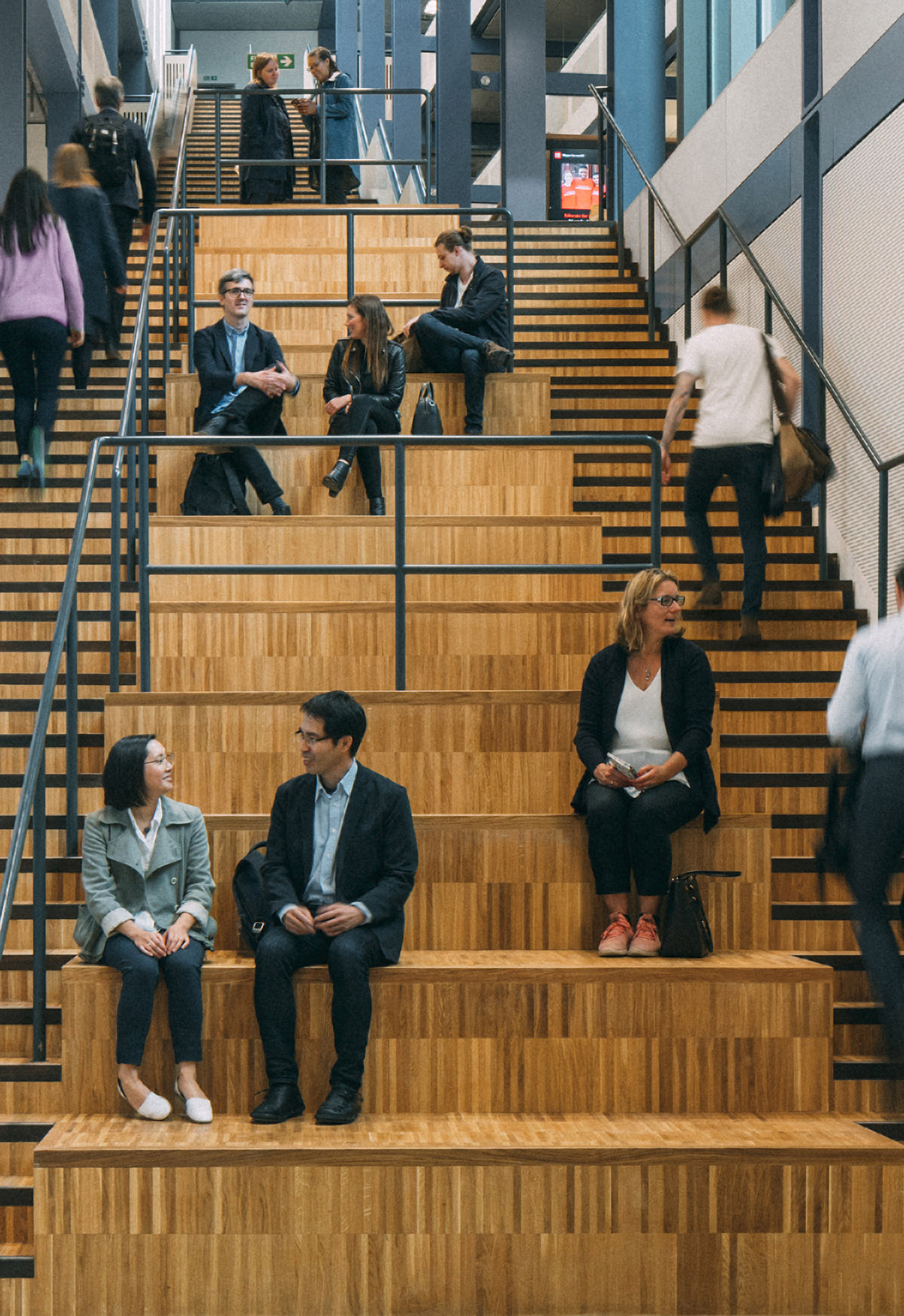
Adaptation, participation & co-design
“Students will colonise any space available, but they will rarely do it in the way the designers intended. Users of space, and particularly younger people, will interpret their surroundings in their own way, which will very often deviate from the intended purpose.” — Jill Stevenson, University of Stirling.
Citing numerous examples and applications, the panel all drew similar conclusions: that humans need to feel that they have some element of control over their environment, and need to be able to adapt it to their individual needs. Karen reasoned that spaces should be designed in the eye of the user, not the creator. The panel agreed that observation alone is not enough. Participation and interaction with a given environment are vital, and so involving the users in the design process and creation of space, inviting discussion about its intended use in a ‘co-design’ process, is more likely to result in a successful outcome.
But true co-design requires a great capability not only to trust those being asked to contribute but also to be able to listen and observe effectively through behaviour and usage, not by consulting a committee. As Diarmaid pointed out, a two-year-old in an early years setting cannot present a report on their use of space – so it is up to us to observe more carefully the social ecologies and structures that we build for ourselves, using the niches, habitats, edges and spaces available to us.
One idea is leaving the intended usage deliberately open to interpretation, with a ‘looser’ space that more people can interpret and use in their own way. If the form of design facilitates multiple uses and applications and perhaps echoes some of the changes and rhythms ever-present in the natural world, designers may be able to get closer to a solution suitable for more people.
In order for true freedom and flexibility of use to be adopted and accepted, however, there needs to be a cultural shift in leadership modelling. Jill and Stephen discussed how senior leaders need to challenge the norms and lead by example, ‘permitting’ through their own behaviours new ways to access and interact with natural and indoor spaces. Diarmaid agreed, pointing out that culture is a key mechanism by which more natural learning environments can be enabled, as people may need to feel “permitted” to move away from the expected behavioural and environmental norms of an educational setting.
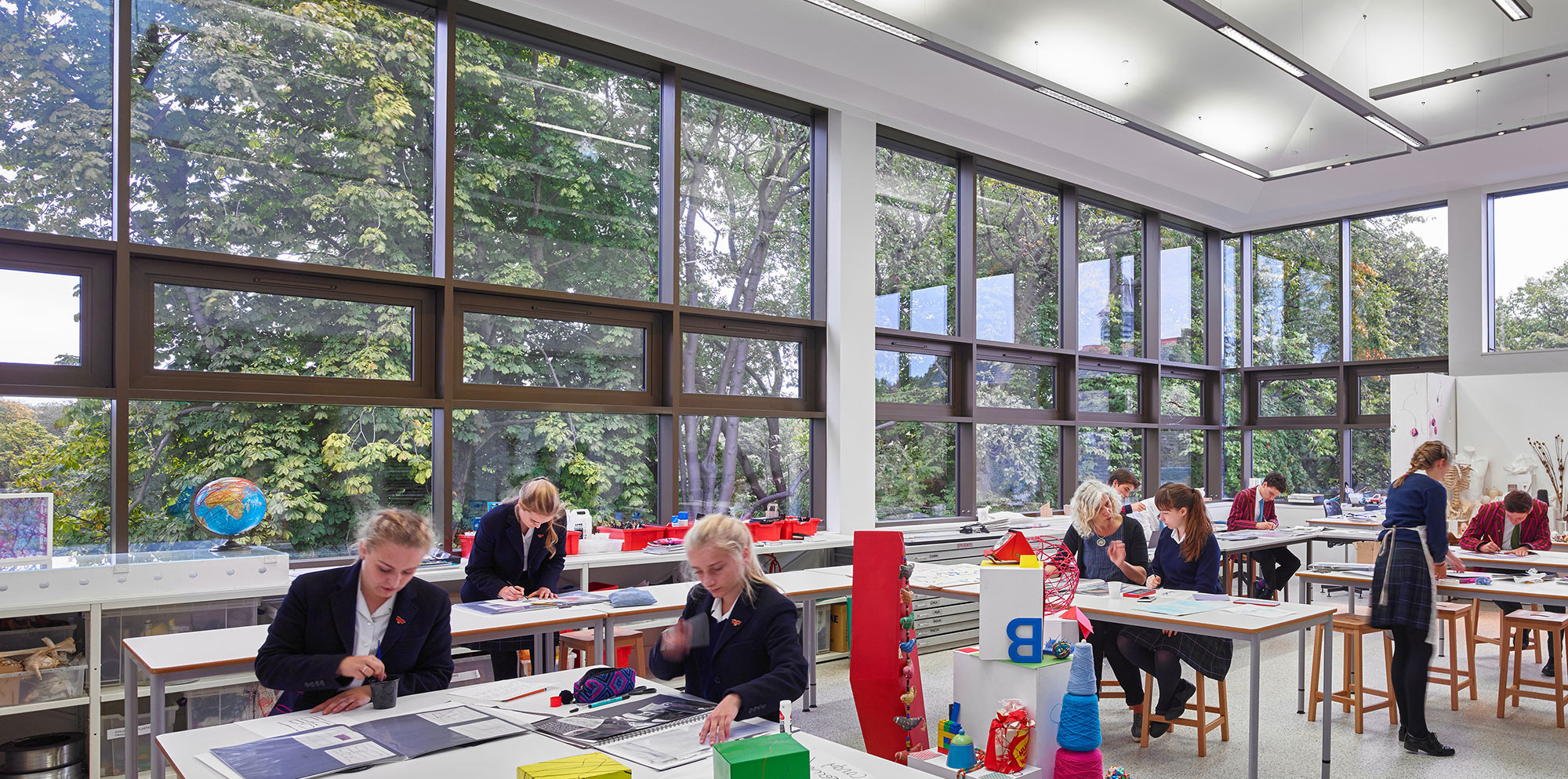
Project Image: Spens Building, Fettes College.
Design by Page\Park; Photo by Andrew Lee.
Aligning the role of design with administrative governance
“As designers, we are passengers to the decisions of those determining the curriculum and pedagogy. If these three elements understood and communicated with each other more effectively, could we reach an ideal level of alignment?” — Stephen Long, Scottish Future Trust.
While the panellists all agreed that it is not the role of designers to instruct or advise on curriculum or teaching practices, the consideration of the environment in which learning happens is an inextricable component of the educational system. As Stephen suggested, it is potentially in the relationship and communication between the curricular “what”, the pedagogic “how” and the environmental “where”, that we may get closer to an ideal of a learning habitat. Karen highlighted that dictating curriculum or pedagogy may not be the role of the designer, but what designers can do is remove barriers and create pathways between learning environments, both literally and by association.
Is there such a thing as an ideal learning habitat?
There is mounting evidence to suggest that we don’t really know much about the ways that people learn. What we do know is that there is no “one size fits all” solution; we all learn in different ways and respond individually to different situations, environments and stimuli. The growing appreciation of recognising and celebrating difference could lead to a new exploration of flexibility, open interpretation and multiple functionalities of space.
Karen believes that it is very much about creating spaces which can flex and adapt for individuals, allowing them to assign their own meaning and use to a given space. So it is not necessarily for the architect to provide a complete solution, but to provide a spatial framework to be filled in by the users, following the theories of Herman Hertzberger. This hands the power to the people using the space to let them use it as they will — a “terrifying notion” for an architect perhaps, but one which moves towards the looser fit discussed earlier.
Jill agreed, adding that it is not just the differences between individuals that will influence their experience of an environment, but also the changes of mood and circumstance that each of those individuals goes through on a daily basis. We live in a constant state of change ourselves; also echoing the natural rhythms and evolutions of the natural world. When scaled up across educational settings, the need for open interpretation and flexible usage of space becomes even more imperative.
Stephen also observed that there is no universal agreement that outside is always good, and reminded us that “natural” habitats are not just green or rural spaces, but instead incorporate urban landscapes, as well as social structures and behaviour. The alignment of place and purpose, Stephen outlined, will help make those spaces make more sense; while chemistry in a lab may confuse and bore, it could come to life on a farm, for example. Human nature and experience are inextricably linked with their environments, and it is in the relationship and interaction between humans and their environments that a feeling of psychological safety can be reached, which is essential for learning.
Diarmaid recounted how, at a talk some years previously, a child stood up in front of hundreds of people and spoke convincingly about what it takes to create a positive learning environment. It boiled down to three things for her: creating spaces for comfort and safety, creating spaces for stretch and challenge, and creating spaces to retreat to when you’ve simply gone too far and need to regroup. We have a psychological connection with our surroundings, and as human emotion and experience are in a constant state of flux, it is important for those environments to be open to adaptation.
So whether we are dealing with hardscapes, urban or rural landscapes, indoors, outdoors, whatever and wherever — we should strive to create opportunities for those three basic needs to be met, and to create the pathways to link them without obstacle. If we can achieve that, allowing users some degree of control and flex in their environment, then perhaps we can get closer to a better, more natural learning environment to suit more individual needs.
“We have a collective obligation to help young people be all that they can be; to create spaces in our institutions, organisations and public areas to allow them to get the learning that they as individuals need to prepare for their futures – whatever those futures might hold.”
— Diarmaid Lawlor, Scottish Future Trust
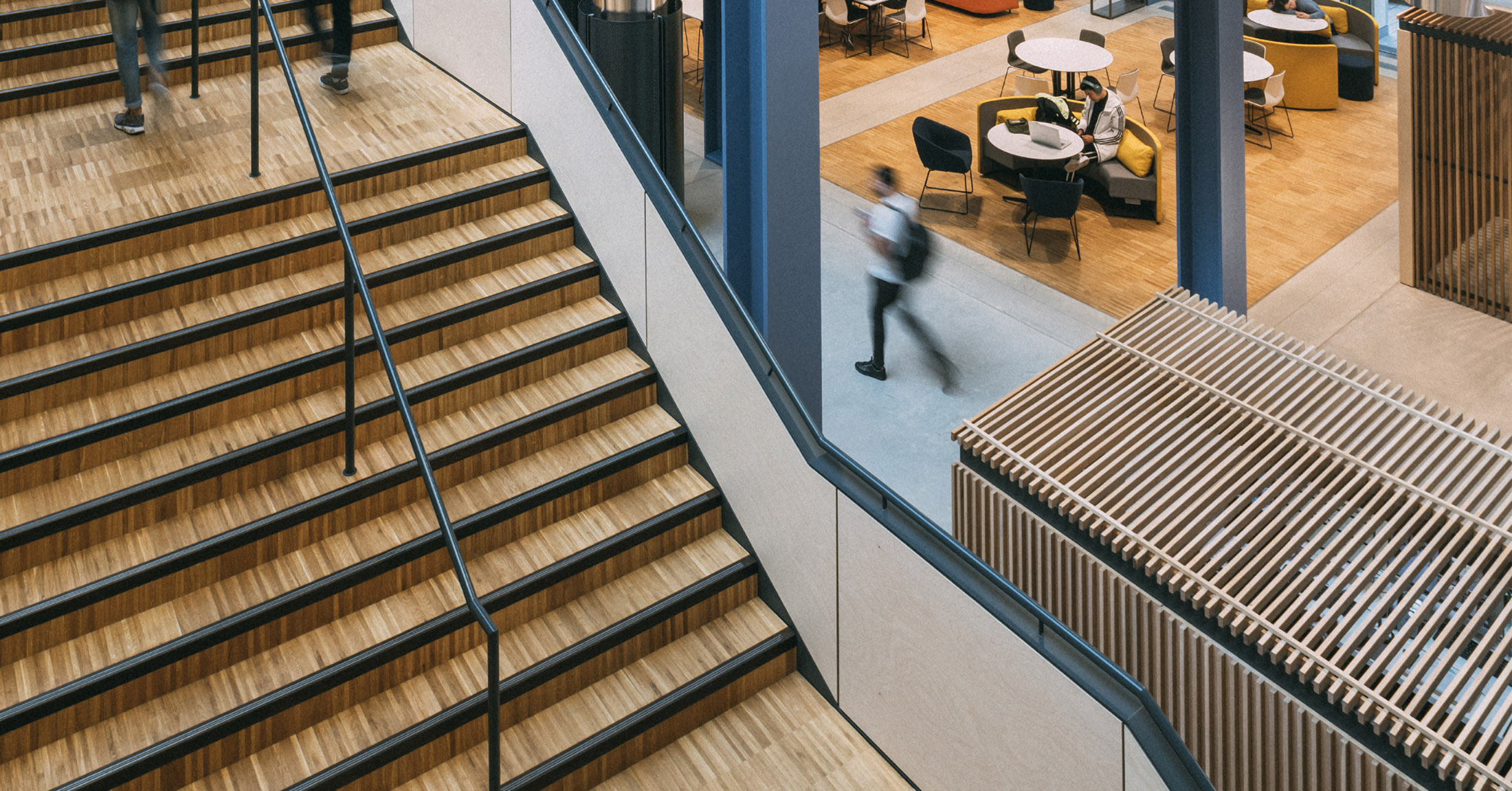
Project Image: London School of Economics
Design by Rogers Stirk Harbour + Partners
Looking to the future
If the last six months have taught us anything, it’s that the future is unknown. The panel agreed that knee-jerk reactions to create sterile, wipe-clean environments filled with antimicrobial materials would be a travesty. But perhaps we do need to look at the longer-term implications of new technologies and techniques; as Karen said, modern ventilation systems have been welcomed thanks to their increased energy efficiency and temperature control, but as they allow very little fresh air, they could have been seen as a hindrance rather than a help during the pandemic.
All speakers agreed that the only certainty is uncertainty, and therefore the role of flexibility and adaptability is crucial to creating fully accessible, diverse environments which can be experienced individually and en masse, and where purpose and place are aligned by the user, not only the designer.
Utilising natural habitats and landscapes to inspire material choices, layouts and pathways between interior and exterior environments is a major part of this. But so is looking to nature for inspiration in terms of constant flux; of shifting light and sound and purpose, of behaviours, social and natural ecologies, and in creating spaces which have the capacity to be adapted and repurposed as required by the users to optimise their own quality of experience.
This virtual event took place on
Thursday, 27 August 2020 at 11am.
But you have not missed out,
you can catch up with the video recording.
Visit our showrooms
Share this news